The Early Effect of Black Land Protection Plan in Northeast China on Industrial Pollution Using Synthetic Control Method
Abstract
:1. Introduction
2. Literature Review
3. Policy Context
4. Research Methodology and Data Sources
4.1. Research Outline
4.2. Methodology
4.3. Research Area and Data
5. Results
5.1. Baseline Results
5.2. Robustness Tests
6. Discussions
7. Conclusions
Author Contributions
Funding
Institutional Review Board Statement
Informed Consent Statement
Data Availability Statement
Conflicts of Interest
| 1 | Chinese National Knowledge Infrastructure. Chinese Journal Full-text Database. https://www.cnki.net/, accessed on 18 January 2022. |
References
- Liang, J. Suggestions on the treatment of industrial waste gas and wastewater. Encycl. Form. 2020, 17, 197. (In Chinese) [Google Scholar] [CrossRef]
- Hao, M.Y.; Zhu, X.Y. Sources and effects of soil heavy metal pollution. Jiangsu Salt Sci. Technol. 2017, 1126. (In Chinese) [Google Scholar] [CrossRef]
- Bourliva, A.; Papadopoulou, L.; Aidona, E.; Giouri, K. Magnetic signature, geochemistry, and oral bioaccessibility of “technogenic” metals in contaminated industrial soils from Sindos Industrial Area, Northern Greece. Environ. Sci. Pollut. Res. 2017, 24, 17041–17055. [Google Scholar] [CrossRef] [PubMed]
- Hu, H.; Han, L.; Li, L.; Wang, H.; Xu, T. Soil heavy metal pollution source analysis based on the land use type in Fengdong District of Xi’an, China. Environ. Monit. Assess. 2021, 193, 643. (In Chinese) [Google Scholar] [CrossRef]
- Niu, S.D.; Lyu, X.; Gu, G.Z. Research on the impact of perceived benefits on farmers’ behavior decision-making of black soil protection: A typical sample of “Lishu Pattern”. Sci. Land. Sin. 2021, 35, 44–53. (In Chinese) [Google Scholar]
- Ministry of Agriculture and Rural Affairs, PRC. Outline of Black Land Protection Plan in Northeast China (2017–2030); Beijing, China, 2017. Available online: http://www.moa.gov.cn/nybgb/2017/dqq/201801/t20180103_6133926.htm (accessed on 1 December 2021).
- Yang, W.Y. Overview of Agronomy; China Agriculture Press: Beijing, China, 2011. (In Chinese) [Google Scholar]
- Yu, L.; Zhang, B. The degradation situations of black soil in China and its prevention and counter measures. Arid Land Resour. Environ. 2004, 18, 99–103. (In Chinese) [Google Scholar]
- Wang, Y.L.; Fang, S.Q.; Zhang, Q.; Jiang, G.G. Resources development makes use of the present condition protection counterplan JiIin Province. J. Jilin Agric. Univ. 2010, 32, 57–59. Available online: https://kns.cnki.net/kcms/detail/detail.aspx?dbname=cjfd2010&filename=jlny2010s1021&dbcode=cjfq (accessed on 4 March 2022).
- Xu, M.G.; Zeng, X.B.; Huang, H.X. Development trend and priority research area of current soil science. China Soils Fert. 2006, 6, 1–7. (In Chinese) [Google Scholar]
- Li, W.B.; Li, M. Ecological protection and restoration of black soil in Northeast China. Acad. Exch. 2014, 7, 151–155. (In Chinese) [Google Scholar]
- Ren, J.M.; Ma, Y.J. Studies on the spatiotemporal dynamics of industrial pollution in Northeast China. Acta Sci. Circumst. 2018, 38, 2108–2118. [Google Scholar]
- Zhang, J.X.; Cai, N.; Yang, C. Impact of environmental regulation on green growth index of industry in China. China Pop. Resour. Environ. 2015, 25, 24–31. [Google Scholar]
- Zhang, Q.; Yu, Z.; Kong, D. The real effect of legal institutions: Environmental courts and firm environmental protection expenditure. J. Environ. Econ. Manag. 2019, 98, 102254. [Google Scholar] [CrossRef]
- He, Q. Fiscal decentralization and environmental pollution: Evidence from Chinese panel data. China Econ. Rev. 2015, 36, 86–100. [Google Scholar] [CrossRef]
- Lin, B.C.; Zheng, S. A new direction in environmental economics. J. Econ. Surv. 2016, 30, 397–402. [Google Scholar] [CrossRef]
- Liu, Y.; Chen, Z. Environmental regulations in China: Policies and their effects. Comp. Econ. Soc. Syst. 2016, 1, 164–173. (In Chinese) [Google Scholar]
- Chu, Z.P.; Chen, B.; Liu, C.X.; Zhu, J. Evolutionary game analysis on haze governance in Beijing-Tianjin-Hebei: Based on a simulation tool for proposed environmental regulation policies. China Pop. Resour. Environ. 2018, 28, 63–75. (In Chinese) [Google Scholar]
- Gamper-Rabindran, S. Did the EPA’s voluntary industrial toxics program reduce emissions? A GIS analysis of distributional impacts and by-media analysis of substitution. J. Environ. Econ. Manage. 2006, 52, 391–410. [Google Scholar] [CrossRef]
- Lin, L. Enforcement of pollution levies in China. J. Public Econ. 2013, 98, 32–43. [Google Scholar] [CrossRef]
- Wang, H.; Fan, C.; Chen, S. The impact of campaign-style enforcement on corporate environmental Action: Evidence from China’s central environmental protection inspection. J. Clean. Prod. 2021, 290, 125881. [Google Scholar] [CrossRef]
- She, Y.; Liu, Y.; Jiang, L.; Yuan, H. Is China’s River Chief policy effective? Evidence from a quasi-natural experiment in the Yangtze River Economic Belt, China. J. Clean. Prod. 2019, 220, 919–930. [Google Scholar] [CrossRef]
- Bao, Q.; Shao, M.; Yang, D.L. Environmental regulation, provincial legislation and pollution emission in China. J. Econ. Res. 2013, 48, 42–54. (In Chinese) [Google Scholar]
- Han, X.Z.; Zhou, W.X. Research perspectives and footprint of utilization and protection of black soil in northeast China. Acta Pedol. Sin. 2021, 58, 1341–1358. (In Chinese) [Google Scholar]
- Han, X.Z.; Li, N. Research progress of black soil in Northeast China. Sci. Geogr. Sin. 2018, 38, 1032–1041. (In Chinese) [Google Scholar] [CrossRef]
- Dou, S. Protection and high-value utilization engineering of Mollisol land in Jilin Province. J. Jilin Agric. Univ. 2020, 42, 473–476. (In Chinese) [Google Scholar]
- Ministry of Agriculture and Rural Affairs, PRC. Action Plan for Black Land Conservation Tillage in Northeast China (2020–2025); Beijing, China, 2020. Available online: http://www.moa.gov.cn/gk/tzgg_1/tz/202003/t20200318_6339304.htm (accessed on 1 December 2021).
- Ministry of Agriculture and Rural Affairs, PRC. Opinions of the CPC Central Committee and The State Council on Comprehensively Promoting Rural Revitalization and Accelerating Agricultural and Rural Modernization; Beijing, China, 2020. Available online: http://www.moa.gov.cn/xw/zwdt/202102/t20210221_6361863.htm (accessed on 3 February 2022).
- Central People’s Government of the People’s Republic of China. Implementation Plan of the National Black Land Protection Project (2021–2025). Available online: http://www.gov.cn/xinwen/2021-07/30/content_5628527.htm (accessed on 3 February 2022).
- Abadie, A.; Gardeazabal, J. The economic costs of conflict: A case study of the Basque country. Am. Econ. Rev. 2003, 93, 113–132. [Google Scholar] [CrossRef] [Green Version]
- Abadie, A.; Diamond, A.; Hainmueller, A.J. Synthetic control methods for comparative case studies: Estimating the effect of California’s tobacco control program. J. Am. Stat. Assoc. 2010, 105, 493–505. [Google Scholar] [CrossRef] [Green Version]
- Abadie, A.; Diamond, A.; Hainmueller, J. Comparative Politics and the Synthetic Control Method. Am. J. Pol. Sci. 2015, 59, 495–510. [Google Scholar] [CrossRef]
- Sampaio, B. Identifying peer states for transportation policy analysis with an application to New York’s handheld cell phone ban. Transp. A Transp. Sci. 2014, 10, 1–14. [Google Scholar] [CrossRef]
- Lin, B.; Chen, X. Is the implementation of the increasing block electricity prices policy really effective? Evidence based on the analysis of synthetic control method. Energy 2018, 163, 734–750. [Google Scholar] [CrossRef]
- Albalate, D.; Bel, G.; Mazaira-Font, F.A. Decoupling synthetic control methods to ensure stability, accuracy and meaningfulness. SERIEs 2021, 12, 549–584. [Google Scholar] [CrossRef]
- Xia, H.; Wu, S. Effect of the international tourism island policy on Hainan Farmers’ income and the urban-rural income gap: An analysis based on the GPCA and SCM models. J. Adv. Comput. Intell. Intell. Inform. 2021, 25, 592–600. [Google Scholar] [CrossRef]
- Qi, X.; Han, Y. Energy quota trading can achieve energy savings and emission reduction: Evidence from China’s pilots. Environ. Sci. Pollut. Res. 2021, 28, 52431–52458. [Google Scholar] [CrossRef] [PubMed]
- Abadie, A. Using synthetic controls: Feasibility, data requirements, and methodological aspects. J. Econ. Lit. 2021, 59, 391–425. [Google Scholar] [CrossRef]
- Bertrand, M.; Duflo, E.; Mullainathan, S. How much should we trust differences-in-differences estimates? Q. J. Econ. 2004, 119, 249–275. [Google Scholar] [CrossRef] [Green Version]
- Liu, B.Y.; Zhang, G.L.; Xie, Y.; Shen, B.; Gu, Z.J.; Ding, Y.Y. Delineating the black soil region and typical black soil region of northeastern China. Chin. Sci. Bull. 2021, 66, 96–106. (In Chinese) [Google Scholar] [CrossRef]
- Du, R.; Mao, X.F. Estimating the effects of the policies applied in major grain producing areas based on synthetic control method. Chin. Soft Sci. 2017, 6, 31–38. (In Chinese) [Google Scholar]
- Li, S.Y. The influence of low-carbon city pilot policy on electric energy consumption intensity: Based on synthetic control method. Urban Probl. 2018, 7, 38–47. (In Chinese) [Google Scholar] [CrossRef]
- Kuang, B.; Han, J.; Lu, X.; Zhang, X.; Fan, X. Quantitative evaluation of China’s cultivated land protection policies based on the PMC-Index model. Land Use Policy 2020, 99, 105062. [Google Scholar] [CrossRef]
- Xie, H.; Wang, W.; Zhang, X. Evolutionary game and simulation of management strategies of fallow cultivated land: A case study in Hunan province, China. Land Use Policy 2018, 71, 86–97. [Google Scholar] [CrossRef]
- Sims, K.R.; Thompson, J.R.; Meyer, S.R.; Nolte, C.; Plisinski, J.S. Assessing the local economic impacts of land protection. Conserv. Biol. 2019, 33, 1035–1044. [Google Scholar] [CrossRef]
- Zhong, T.; Huang, X.; Zhang, X.; Scott, S.; Wang, K. The effects of basic arable land protection planning in Fuyang County, Zhejiang Province, China. Appl. Geogr. 2012, 35, 422–438. [Google Scholar] [CrossRef]
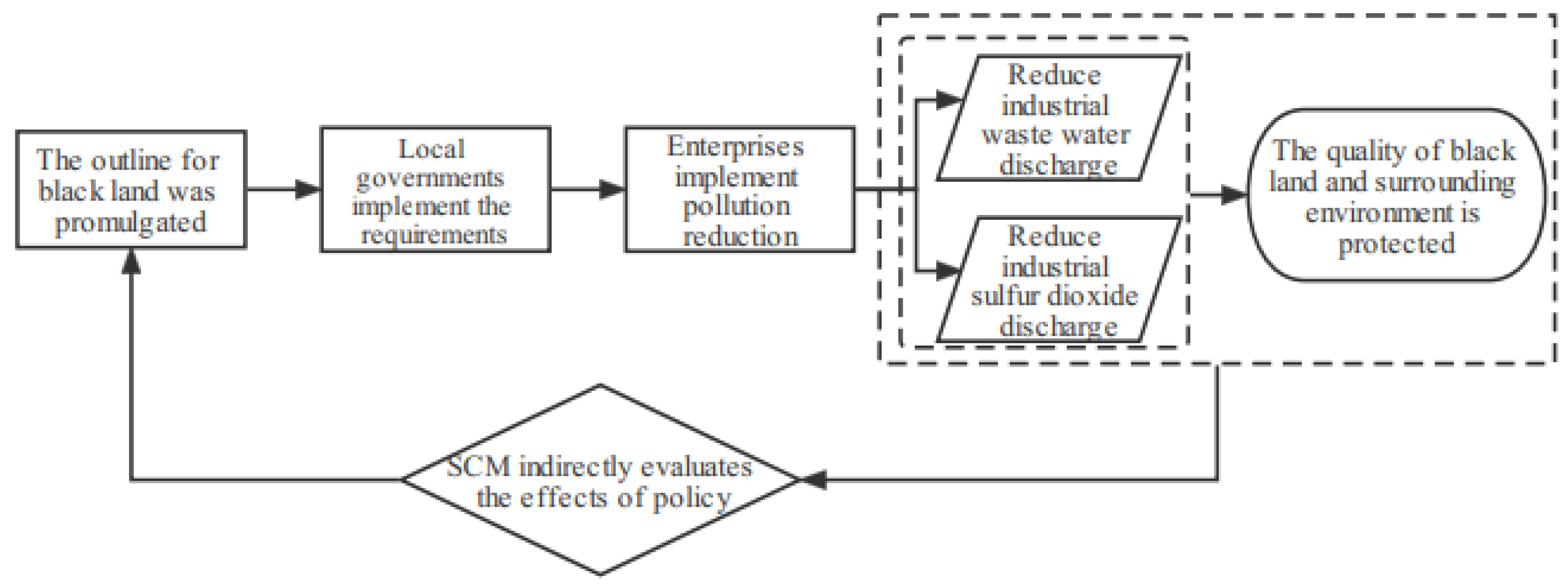
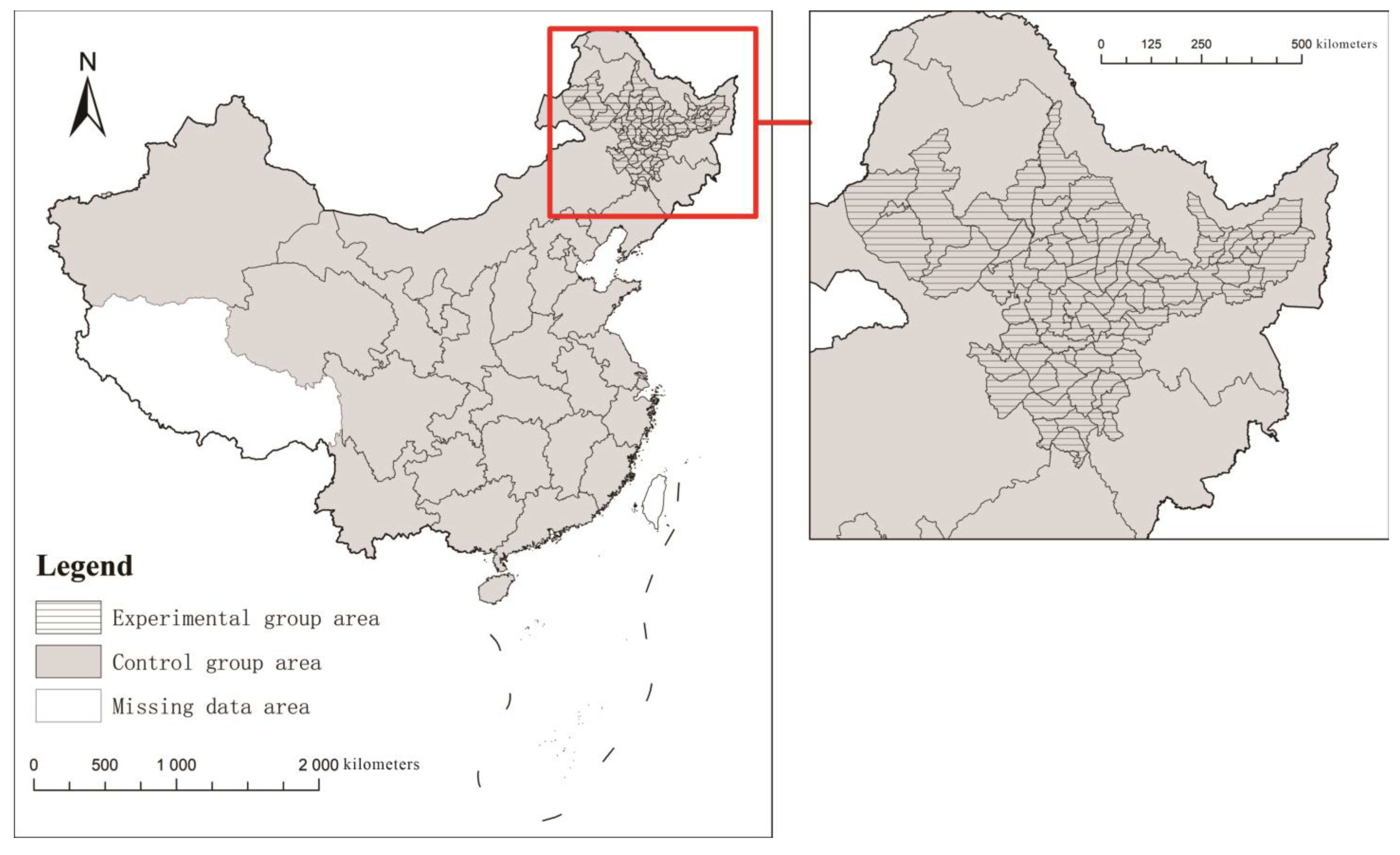
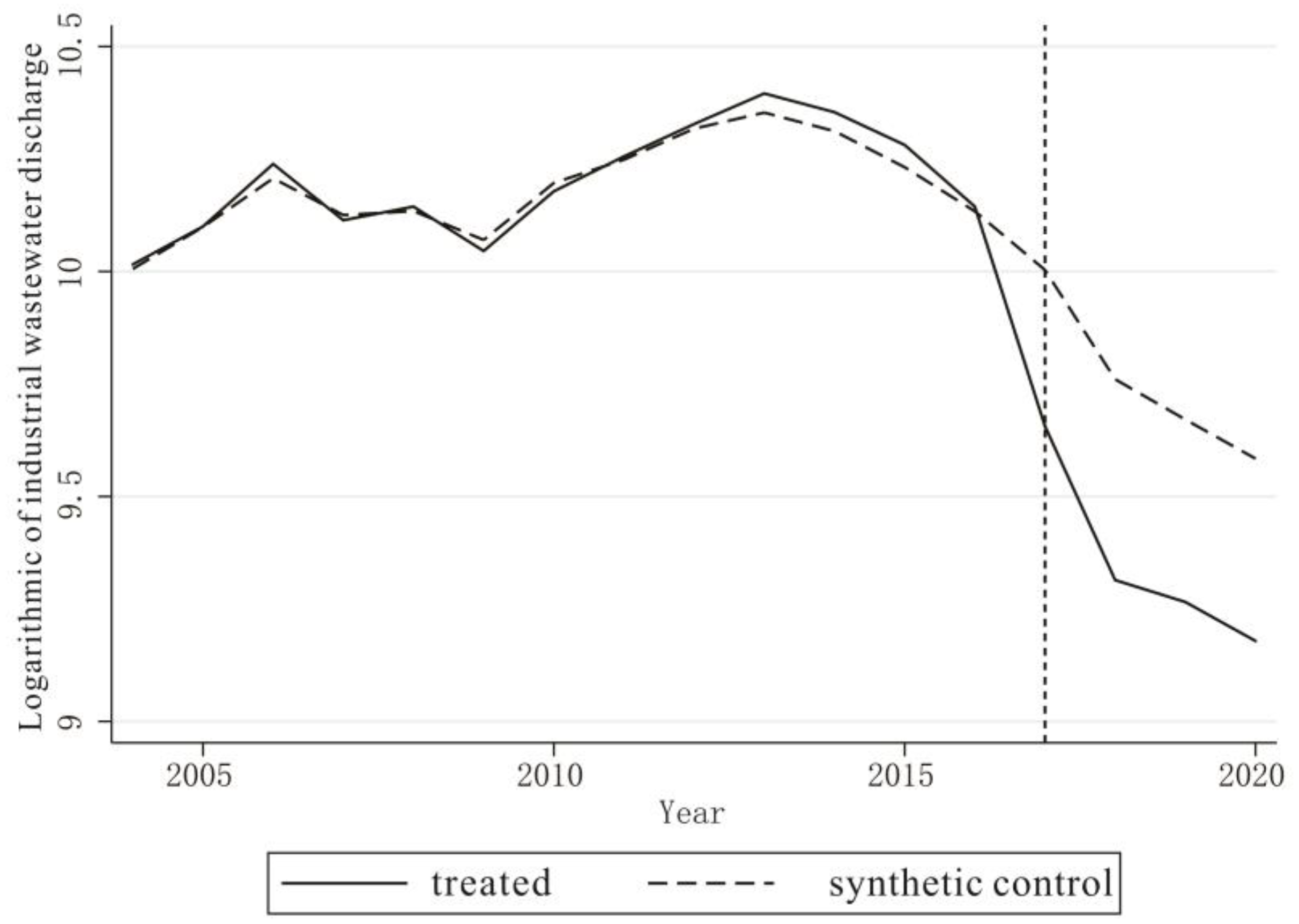
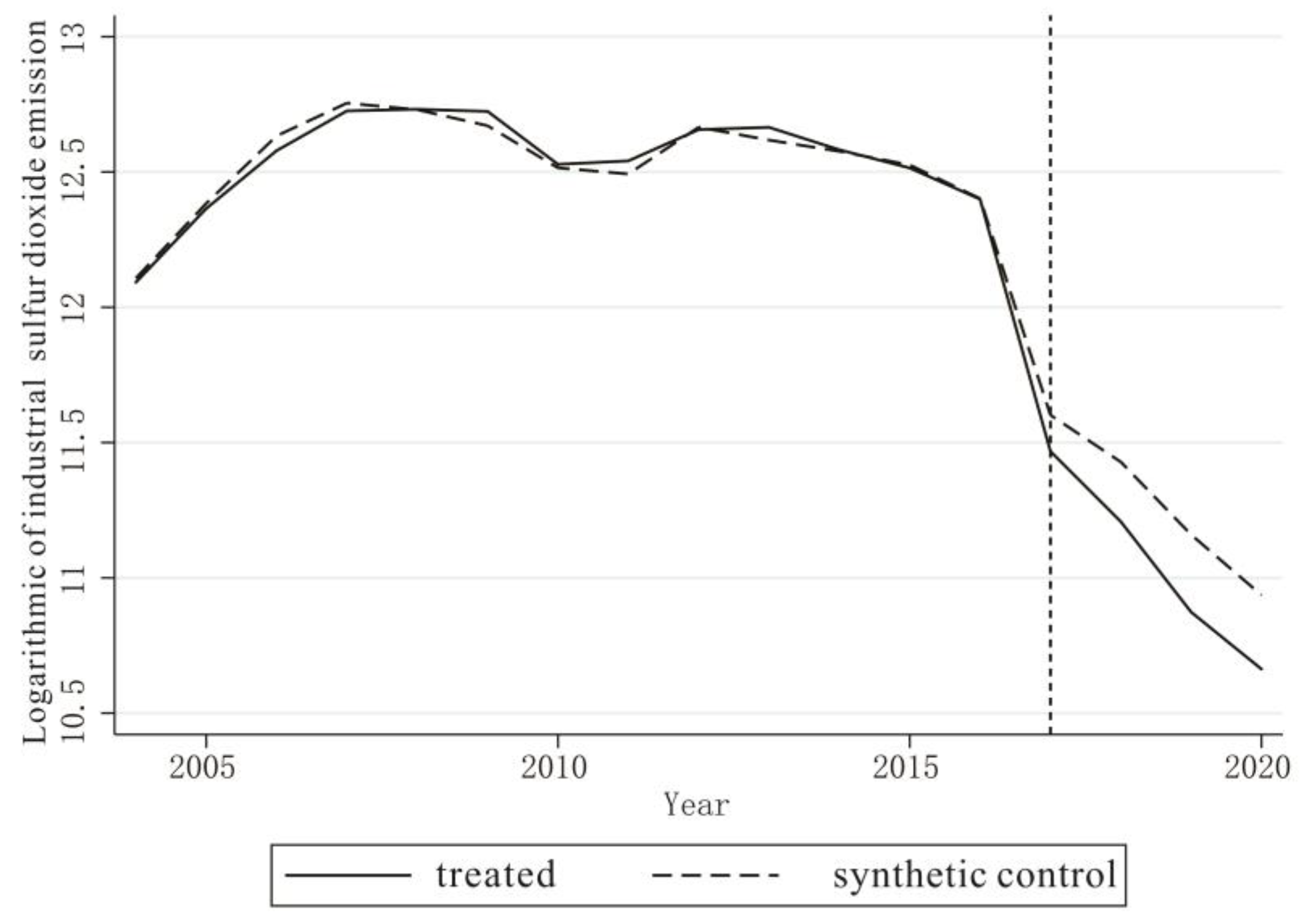
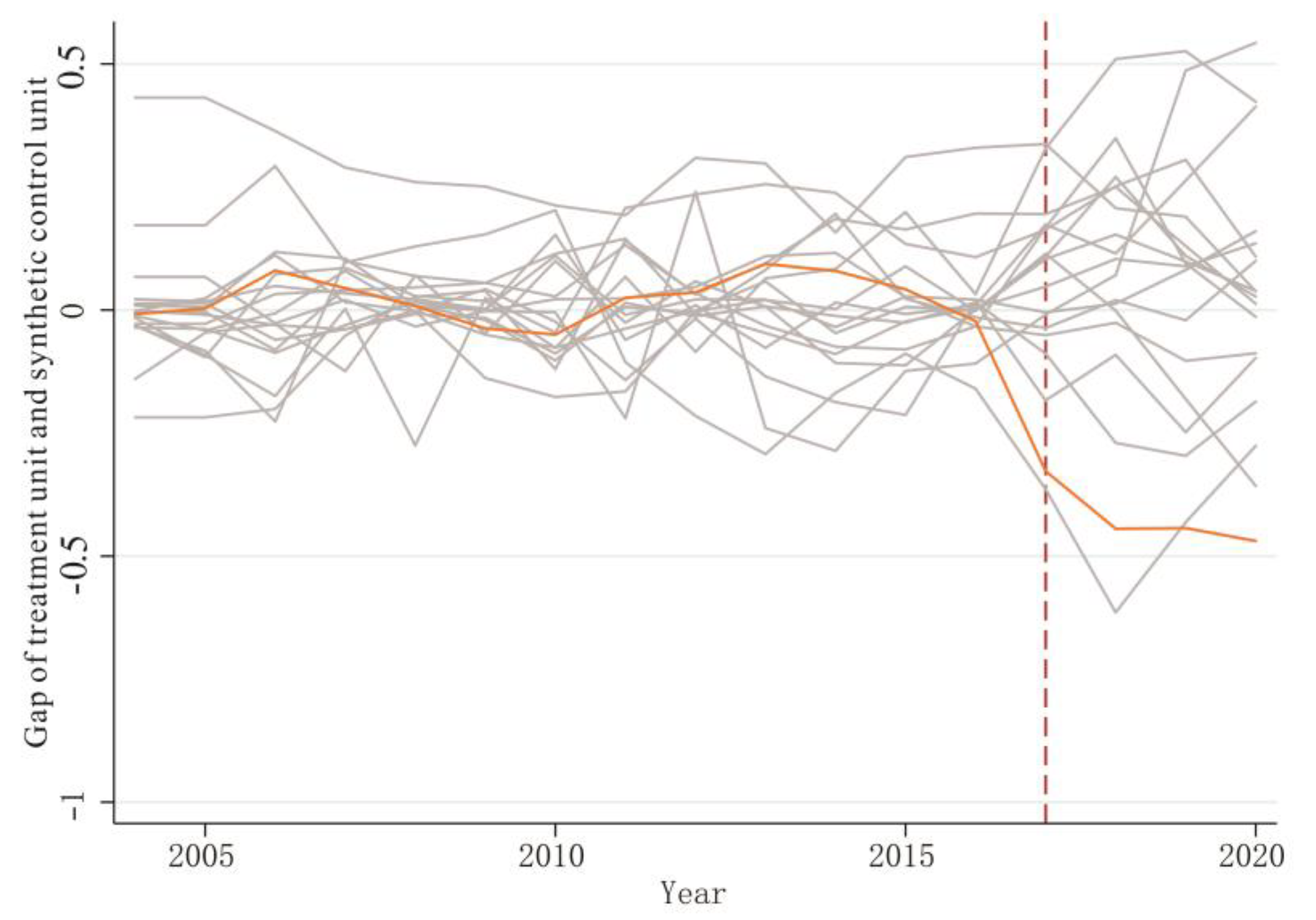

| Area | Industrial Pollutants | 2005 | 2010 | 2015 | 2020 | Average |
|---|---|---|---|---|---|---|
| Black land area | wastewater (million tons) | 243.44 | 263.21 | 291.79 | 96.90 | 234.64 |
| sulfur dioxide (ten thousand tons) | 30.47 | 27.60 | 27.23 | 4.75 | 23.61 | |
| Jilin non-black land area | wastewater (million tons) | 241.90 | 338.91 | 367.98 | 157.33 | 287.88 |
| sulfur dioxide (ten thousand tons) | 14.09 | 16.23 | 17.00 | 3.60 | 14.69 | |
| Heilongjiang non-black land area | wastewater (million tons) | 171.36 | 75.36 | 71.21 | 46.33 | 100.00 |
| sulfur dioxide (ten thousand tons) | 6.63 | 10.95 | 3.91 | 1.99 | 6.91 | |
| Beijing | wastewater (million tons) | 128.13 | 87.13 | 91.74 | 77.16 | 92.46 |
| sulfur dioxide (ten thousand tons) | 10.50 | 5.99 | 4.03 | 1.01 | 5.47 | |
| Hebei | wastewater (million tons) | 1245.33 | 1096.52 | 1065.50 | 395.12 | 1004.12 |
| sulfur dioxide (ten thousand tons) | 128.10 | 104.29 | 104.24 | 22.45 | 96.56 | |
| Shanxi | wastewater (million tons) | 320.99 | 394.31 | 492.62 | 315.80 | 402.19 |
| sulfur dioxide (ten thousand tons) | 120.00 | 103.06 | 107.79 | 69.64 | 102.40 | |
| Anhui | wastewater (million tons) | 634.87 | 733.99 | 695.80 | 655.24 | 690.17 |
| sulfur dioxide (ten thousand tons) | 51.50 | 48.68 | 47.43 | 20.42 | 44.15 | |
| Shandong | wastewater (million tons) | 1390.71 | 1545.72 | 1800.21 | 1015.79 | 1623.94 |
| sulfur dioxide (ten thousand tons) | 171.50 | 115.26 | 135.89 | 73.35 | 134.96 | |
| Szechwan | wastewater (million tons) | 1225.90 | 949.04 | 598.21 | 453.16 | 827.16 |
| sulfur dioxide (ten thousand tons) | 114.10 | 85.68 | 65.71 | 34.13 | 76.92 | |
| Shaanxi | wastewater (million tons) | 428.19 | 480.15 | 343.49 | 194.38 | 378.25 |
| sulfur dioxide (ten thousand tons) | 80.00 | 77.74 | 57.59 | 12.43 | 59.97 |
| Synthetic Industrial Wastewater Emission Group (RMSEP = 0.0225) | Synthetic Industrial Sulfur Dioxide Emission Group (RMSEP = 0.0317) | ||
|---|---|---|---|
| Province | Weight | Province | Weight |
| Jilin non-black land area | 0.569 | Jilin non-black land area | 0.683 |
| Heilongjiang non-black land area | 0.114 | Heilongjiang non-black land area | 0.000 |
| Inner Mongolia non-black land area | 0.093 | Inner Mongolia non-black land area | 0.284 |
| Xinjiang | 0.068 | Xinjiang | 0.033 |
| Fujian | 0.047 | Fujian | 0.000 |
| Hainan | 0.030 | Hainan | 0.000 |
| Qinghai | 0.012 | Qinghai | 0.000 |
| Ningxia | 0.011 | Ningxia | 0.000 |
| Predictive Control Variable | Black Land Area | Synthetic Black Land Area ① | Synthetic Black Land Area ② |
|---|---|---|---|
| 2005 Population (10,000) | 3001.74 | 3041.65 | 2624.26 |
| 2010 Population (10,000) | 3004.24 | 3077.08 | 2670.55 |
| 2015 Population (10,000) | 3249.57 | 3077.61 | 2685.72 |
| 2005 GDP (100 million yuan) | 4394.39 | 4297.63 | 3696.80 |
| 2005 GDP (100 million yuan) | 9987.68 | 9662.41 | 9502.81 |
| 2005 GDP (100 million yuan) | 16,594.43 | 15,236.33 | 15,110.74 |
| 2005 Industrial output (100 million yuan) | 4552.78 | 4368.25 | 3511.53 |
| 2010 Industrial output (100 million yuan) | 12,420.93 | 13,651.48 | 12,962.24 |
| 2015 Industrial output (100 million yuan) | 26,420.93 | 22,652.41 | 22,005.28 |
| Area | Prior-Intervention RMSPE | Post-Intervention RMSPE | Ratio |
|---|---|---|---|
| Black land area | 0.0238 | 0.3545 | 14.8611 |
| Shanxi | 0.0868 | 0.4909 | 5.6552 |
| Liaoning | 0.0847 | 0.3476 | 4.1026 |
| Anhui | 0.0681 | 0.2717 | 3.9947 |
| Jilin non-black land area | 0.0681 | 0.2324 | 3.4158 |
| Tianjin | 0.0433 | 0.1011 | 2.3349 |
| Fujian | 0.1659 | 0.3752 | 2.2481 |
| Zhejiang | 0.0589 | 0.1228 | 2.0853 |
| Jiangxi | 0.1038 | 0.1739 | 1.6752 |
| Shandong | 0.1468 | 0.1882 | 1.2821 |
| Beijing | 0.2634 | 0.2971 | 1.1281 |
| Jiangsu | 0.3059 | 0.2203 | 0.7202 |
| Area | Prior-Intervention RMSPE | Post-Intervention RMSPE | Ratio |
|---|---|---|---|
| Black land area | 0.1412 | 0.4451 | 3.1518 |
| Anhui | 0.0349 | 0.0982 | 2.8093 |
| Shanxi | 0.0605 | 0.1414 | 2.3366 |
| Guangxi | 0.0802 | 0.1755 | 2.1881 |
| Henan | 0.0471 | 0.1023 | 2.1707 |
| Shandong | 0.2394 | 0.4405 | 1.8397 |
| Liaoning | 0.1077 | 0.1713 | 1.5904 |
| Hunan | 0.0965 | 0.1451 | 1.503 |
| Jiangsu | 0.0577 | 0.6943 | 1.2029 |
| Hubei | 0.0684 | 0.0747 | 1.0921 |
| Guangdong | 0.0988 | 0.0771 | 0.7807 |
| Tianjin | 0.3494 | 0.0952 | 0.2723 |
| Variable | (i) | (ii) | (iii) | (iv) | (v) | (vi) |
|---|---|---|---|---|---|---|
| Treat × Period | −0.472 ** | −0.459 * | −0.581 ** | −0.818 *** | −0.487 ** | −0.525 ** |
| Variable control | NO | YES | NO | YES | YES | YES |
| Time fixed | NO | NO | YES | NO | YES | YES |
| Region fixed | NO | NO | YES | YES | NO | YES |
| 510 | 510 | 510 | 510 | 510 | 510 | |
| 0.09 | 0.13 | 0.27 | 0.29 | 0.28 | 0.25 |
| Variable | (i) | (ii) | (iii) | (iv) | (v) | (vi) |
|---|---|---|---|---|---|---|
| Treat × Period | −1.026 ** | −0.856 *** | −0.423 * | −0.758 *** | −0.623 * | −0.376 * |
| Variable control | NO | YES | NO | YES | YES | YES |
| Time fixed | NO | NO | YES | NO | YES | YES |
| Region fixed | NO | NO | YES | YES | NO | YES |
| 510 | 510 | 510 | 510 | 510 | 510 | |
| 0.17 | 0.23 | 0.29 | 0.28 | 0.21 | 0.36 |
Publisher’s Note: MDPI stays neutral with regard to jurisdictional claims in published maps and institutional affiliations. |
© 2022 by the authors. Licensee MDPI, Basel, Switzerland. This article is an open access article distributed under the terms and conditions of the Creative Commons Attribution (CC BY) license (https://creativecommons.org/licenses/by/4.0/).
Share and Cite
Tang, Z.; Song, W.; Zou, J. The Early Effect of Black Land Protection Plan in Northeast China on Industrial Pollution Using Synthetic Control Method. Land 2022, 11, 585. https://doi.org/10.3390/land11040585
Tang Z, Song W, Zou J. The Early Effect of Black Land Protection Plan in Northeast China on Industrial Pollution Using Synthetic Control Method. Land. 2022; 11(4):585. https://doi.org/10.3390/land11040585
Chicago/Turabian StyleTang, Zhipeng, Wenming Song, and Jialing Zou. 2022. "The Early Effect of Black Land Protection Plan in Northeast China on Industrial Pollution Using Synthetic Control Method" Land 11, no. 4: 585. https://doi.org/10.3390/land11040585
APA StyleTang, Z., Song, W., & Zou, J. (2022). The Early Effect of Black Land Protection Plan in Northeast China on Industrial Pollution Using Synthetic Control Method. Land, 11(4), 585. https://doi.org/10.3390/land11040585








